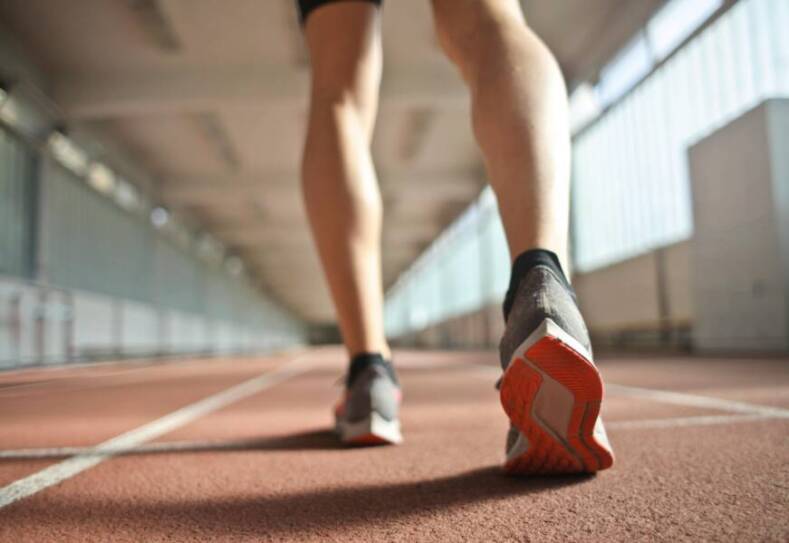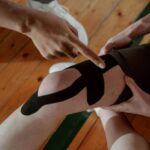Running form is a topic of interest and debate among athletes and coaches, particularly when it comes to the discussion of foot strike patterns. The two predominant types are heel striking and forefoot running. Heel strikers land on the heel of the foot first before rolling forward to the toe, a pattern commonly observed in endurance runners. Forefoot runners, on the other hand, land on the balls of their feet, which is a technique often favored by sprinters.
Various studies explore the advantages and disadvantages of each foot strike technique with an eye toward efficiency, injury prevention, and performance. Advocates of forefoot running argue that it leads to less impact on landing and may potentially reduce the risk of certain injuries, while proponents of heel striking highlight its prevalence and natural occurrence in many runners, particularly over long distances.
The choice between heel strike and forefoot running may not be a one-size-fits-all solution. Individual anatomy, biomechanics, and type of running activity play significant roles in determining the most suitable technique. Therefore, runners and coaches often focus on optimizing an individual’s natural running form rather than adhering to a singular ideal.
Fundamentals of Foot Strike Mechanics
Understanding the dynamics of foot strikes is essential for runners to optimize performance and avoid injury. This section explores the primary types of foot strikes and the biomechanics of each method.
Types of Foot Strikes
Foot strike refers to how a runner’s foot contacts the ground during a stride. There are three main types of foot strikes:
- Forefoot Strike (FFS): The runner’s forefoot, or the ball of the foot, touches the ground first. The heel may or may not touch down subsequently.
- Midfoot Strike (MFS): The outside edge of the midfoot lands first, and then the foot flattens, with both the forefoot and heel eventually making contact.
- Heel Strike (HS): The runner’s heel contacts the ground first before rolling forward towards the toes.
Biomechanics of Heel Striking vs. Forefoot Striking
The biomechanics of heel striking versus forefoot striking can have different implications for a runner’s efficiency, speed, and proneness to injury.
- Heel Striking: A heel strike involves landing with an extended leg and the heel hitting the ground prior to the rest of the foot. This method is prevalent among distance runners.
- Forefoot Striking: Forefoot striking entails landing on the toes or ball of the foot before the heel, if at all. It often leads to a shorter ground contact time and is commonly used by sprinters.
Each strike pattern employs distinct muscle groups, absorbs impacts differently, and can affect a runner’s posture and stride length. It is crucial for runners to understand their natural foot strike patterns and to consider how changes in technique might help or hinder their running economy and injury risk.
Comparing Heel Strike and Forefoot Running Techniques
When examining running techniques, heel strikers and forefoot strikers exhibit distinct biomechanical patterns that can have various implications on performance and injury prevention.
Heel Striker Characteristics
A heel striker typically lands with the heel first during the running gait cycle. This style is characterized by:
- Ground Contact: The heel touches down before the rest of the foot, often resulting in a longer stride and increased ground reaction time.
- Posture: They usually have a more upright posture, with less forward lean of the body.
- Common Among: Distance runners often employ heel striking, as it can be more comfortable during long, steady-paced runs.
Forefoot Striker Characteristics
A forefoot striker, on the other hand, lands on the ball of the foot or toes. Their running form is distinct in the following ways:
- Ground Contact: The ball of the foot or the toes makes initial contact, potentially leading to shorter ground contact time.
- Body Lean: This runner tends to have a slight forward lean, aligning their body’s center of gravity over the landing foot.
- Common Among: Sprinters and runners looking to increase speed or reduce impact forces on the heel may prefer forefoot striking.
Injury Risks and Prevention
When assessing heel striking versus forefoot running, it’s important to recognize the different injury risks related to each style and investigate methods to mitigate those risks.
Impact on Joints and Muscles
Heel striking typically transmits greater impact forces through the legs, which can potentially increase the risk of knee and hip injuries. Such impact can lead to the development of conditions like runner’s knee or hip bursitis. In contrast, forefoot running shifts stress away from the knee and hip, but it can increase the load on the calf muscles, Achilles tendon, and metatarsals, which could predispose runners to shin splints, stress fractures, and plantar fasciitis.
Strategies for Reducing Injury Risk
- Proper Footwear: Choosing the right shoes can provide the necessary support and cushioning for the runner’s particular gait and foot strike pattern.
- Strength Training: Incorporating exercises that target the lower body can enhance muscle strength and joint stability, reducing injury susceptibility.
- Running Form Drills: These drills help to refine technique, ensuring that runners land with their feet directly beneath the body to minimize overstriding.
- Gradual Transition: When altering foot strike patterns, a slow and gradual change allows the body to adapt without overwhelming the musculoskeletal system.
- Rest and Recovery: Sufficient rest days and a gradual increase in training volume can allow the tissues time to recover and adapt.
Efficiency and Performance
When discussing running forms, efficiency and performance are pivotal. The choice between heel striking and forefoot running influences both energy expenditure during a run and the resulting performance metrics, which can differ notably between distance and sprint running.
Energy Expenditure Differences
Heel Strikers: Generally spend more time with their foot in contact with the ground, which may have implications for energy usage. They are often thought to be less efficient due to the braking effect of landing heel first.
Forefoot Runners: They tend to have a shorter ground contact time, suggesting possible energy savings. However, this does not definitively mean that forefoot running is more efficient, as energy cost is multifactorial and can vary based on individual biomechanics.
Performance Metrics in Distance vs. Sprint Running
Distance Runners: Majority are heel strikers, possibly due to the perceived lower metabolic cost over long distances. Efficiency for distance runners is often gauged by the ability to maintain pace while conserving energy.
Sprinters: Frequently employ a forefoot strike pattern, which aligns with their need for rapid ground contact and immediate propulsion. Performance for sprinters is measured by their speed and the quickness of their start, both potentially enhanced by forefoot striking.
It’s important to recognize that individual biomechanics play a significant role in determining which running style is more efficient or leads to better performance for each runner.
The Role of Footwear in Running Gait
Footwear significantly impacts one’s running gait, influencing the interaction between the foot and the ground. The design of a shoe can encourage different strike patterns, which have various implications for performance and injury risk.
Conventional Running Shoes vs. Minimalist Shoes
Conventional Running Shoes are constructed with a considerable amount of heel cushioning. This design can result in a runner adopting a heel strike pattern, as the bulkier heel might lead to an inclination to land heel-first. Heel strikers typically hit the ground with their heel, followed by a rolling forward motion to toe-off.
- Heel cushioning: Often results in a heel strike due to heel-heavy design
- Additional technologies: May include stability features that can influence gait
In contrast, Minimalist Shoes tend to have less cushioning and are lighter, which can promote a forefoot strike. Runners often find themselves more likely to land on the balls of their feet when wearing these shoes, which can be more akin to natural, barefoot running.
- Forefoot cushioning: Typically lighter, leading to potential forefoot or midfoot striking
- Minimalist design: Mimics barefoot conditions, influencing the running gait toward a natural strike pattern
The Transition to Barefoot Running
The shift from conventional footwear to Barefoot Running can have a profound impact on one’s running technique. This style of running involves direct contact with the ground, leading to a natural forefoot or midfoot strike. Barefoot runners generally experience a shorter, quicker stride and land with the forefoot, which can enhance the foot’s ability to act as a natural shock absorber.
- Forefoot strike: Landing on the ball of the foot or toes with a possibility of the heel not touching the ground
- Natural gait: Can lead to adaptations in stride length and frequency
It is important to note that a transition to barefoot running should be gradual to avoid injuries due to the change in gait and the stress on different muscle groups. This adjustment period is critical for the muscles and tendons to adapt to the new demands of forefoot running.
Training and Adaptation for Runners
In the context of running, adapting one’s technique and building strength are pivotal. Runners often seek to enhance performance and reduce injury risk through training that includes technique adjustments and physical conditioning.
Transitioning Between Foot Strike Patterns
When a runner aims to transition between foot strike patterns, they require a gradual and structured approach. Running coaches often recommend a phased method to allow the body to adapt without undue stress. Key aspects of this transition include:
- Analysis of Current Technique: It is beneficial for a runner to work with a coach to analyze their current running form.
- Incremental Changes: Shifting from heel striking to forefoot striking, or vice versa, should occur over weeks or months, not days.
- Consistent Practice: Regular, short runs focusing on the new foot strike can facilitate adaptation.
Strength and Flexibility Drills
Specific drills can improve strength and flexibility, which are essential for any foot strike pattern. Physical therapists may advise on drills that enhance the body’s resilience to changes in running mechanics. Noteworthy drills include:
- Calf Raises: To build lower leg strength, conducive to a solid forefoot strike.
- Hamstring Stretches: Flexibility here helps prevent injuries during stride changes.
- Toe Walks: Enhance forefoot strength, which is crucial for forefoot strikers.
Emphasis on these areas contributes to a smoother transition and can help in preventing overuse injuries that often accompany a sudden change in running mechanics.
Advanced Concepts in Running Biomechanics
The intricacies of running biomechanics encompass both analytical assessment during different types of foot strikes and the implementation of findings to assist runners in recovery and rehabilitation.
Gait Analysis and Biomechanical Assessments
Gait analysis is a tool used by biomechanists to scrutinize the way runners move, aiming to optimize performance and minimize injury. It evaluates ground reaction forces and the biomechanical efficiency of either the heel strike (RFS) or forefoot strike (FFS). Key findings have noted that RFS runners may experience higher impact forces, which translates into distinct stress on the ankles, knees, and hips. Conversely, FFS runners display a different load distribution, potentially lowering the occurrence of certain injuries.
- Ground Reaction Forces: Measurement of force components reveals how the foot interacts with the ground during foot strikes.
- Impact Forces: These are typically higher in RFS patterns due to the heel making initial contact.
During biomechanical assessments, professionals employ a 3D motion capture analysis system to get detailed insights into joint kinetics and kinematics.
Recovery and Rehabilitation
Post-injury, the focus shifts to recovery and rehabilitation, where research has revealed that modifying foot strike techniques can influence recuperation. Reduction in running distance and adaptative changes to the running technique are implemented based on biomechanical insights gathered during gait analysis.
- Foot Strike Modification: Adjusting from an RFS to an FFS pattern may alleviate joint stress and assist in injury prevention.
- Rehabilitative Strategies: These are tailored to correct biomechanical deficits identified through gait analysis.
The approach towards recovery is multifaceted, often dovetailing biomechanical interventions with physiotherapeutic modalities to restore and enhance a runner’s form and function.
Community and Culture of Running
Within the running community, debate often centers on the optimal footstrike pattern. Whether it’s within online forums or at local running clubs, runners from various backgrounds – from recreational runners to elite athletes – share their experiences and insights. Running coaches often weigh in with guidance tailored to individual athletes, considering biomechanics and running goals.
Mexico has contributed to this rich culture notably through the Tarahumara tribe, made famous by the book Born to Run. Their endurance running prowess is often linked with a forefoot strike pattern, stirring interest from runners worldwide seeking to emulate their technique.
The conversation isn’t limited to anecdotal evidence and personal success stories. Scientific research also informs the community, though findings can be contradictory, adding to the complexity of the debate.
Runner Demographics:
- Elite Athletes: Often prefer a personalized approach, fine-tuning their footstrike to optimize performance.
- Recreational Runners: Majority are heel strikers, though some experiment with forefoot techniques.
- Running Coaches: Use a variety of data to provide biomechanical analysis for runners at all levels.
The running community respects each runner’s unique journey, acknowledging that footstrike is but one aspect of a multifaceted sport. As the culture evolves, it continues to foster a spirit of inclusivity and discovery.








